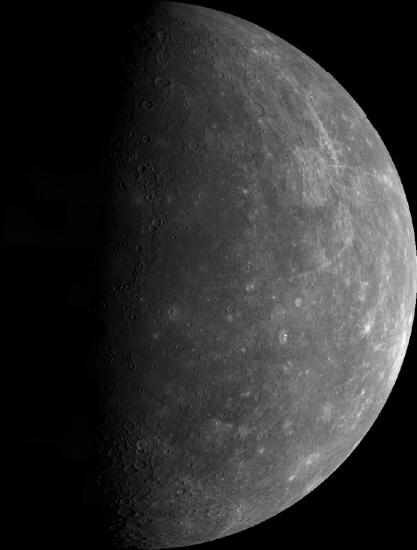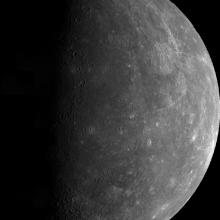-
This mosaic shows the planet Mercury as seen by Mariner 10 as it sped away from the planet on March 29, 1974. The mosaic was made from over 140 individual TV frames taken about two hours after encounter, at a range of 37,300 miles (60,000 kilometers). North is at top. The limb is at right, as is the illuminating sunlight. The equator crosses the planet about two-thirds of the way from the top of the disc. The terminator, line-separating day from night, is about 190 degrees west longitude. The planet shows a gibbous disc-more than half-illuminated. This hemisphere is dominated by smooth plains, rather than heavily cratered terrain, and resembles portions of the Moon's maria in general shape. Half of a very large, multi-ringed basin named Caloris Basin appears near the center of the disc near the terminator. Its surrounding mountain ring is 800 miles (1,300 kilometers) in diameter.

